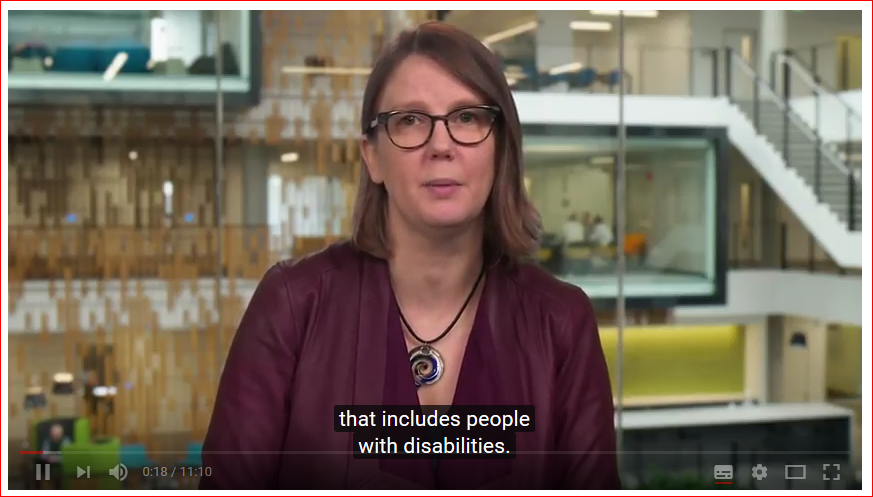Definition for WCAG 2.0 success criterion 1.2.2
1.2.2 Captions (Prerecorded): Captions are provided for all prerecorded audio content in synchronized media, except when the media is a media alternative for text and is clearly labeled as such.
The goal of providing captions is to enable people who are deaf or hard of hearing to watch synchronized media presentations. Captions provide the equivalent of the content available on the audio track. Captions also identify meaningful non-speech information conveyed through sound.
If the page contains synchronized media with audio (generally, a video with an audio track, or an SVG animation with additional audio), ensure that captions for the audio are available (visible by default, can be enabled by the user, available in a separate video file, available in a separate page and linked), and that these are also synchronized. Captions must include all speech, meaningful sound cues, song titles (if the choice of song conveys a particular meaning), music description (if the type or mood of the music is meaningful; for example '[Suspenseful music]').
For a good example of captions, see YouTube: MSFTEnable - Introduction to Disability and Accessibility (making sure to turn on the "Subtitles/Closed captions" option).
Note: if the page contains no prerecorded audio content in synchronized media, this criterion is marked as not applicable.
Testing success criterion 1.2.2
Input into spreadsheet
- Fail
- Prerecorded audio content has inadequate captions. Record the nature of the failure:
- Not all prerecorded audio content in synchronized media has captions.
- The captions are not sufficiently accurate or do not present all meaningful information on the audio track (e.g. only include speech but lack meaningful sound cues).
- The captions obscure other meaningful parts of the media presentation.
- Pass
-
- All prerecorded audio content in synchronized media has captions (either by default, or otherwise reachable/enabled by the user).
- The captions accurately reflect all speech, as well as all meaningful non-speech audio information such as sound cues.
- No meaningful visual elements of the media presentation are obscured by the captions.
- N/A
- The sample has no prerecorded audio content.
How to test
- Manually verify that captions are provided, that they are correctly synchronized with the audio track, and that they present information equivalent to the content of the audio track; this includes the beginning and end of the presentation.
- Verify that the captions include all meaningful non-speech audio information present on the audio track.
- Verify that the captions do not interfere with any other parts of the synchronized media presentation (such as obscuring important parts of the screen shown in the video, covering important visual information).
The following screenshot shows captions for a talking head.
